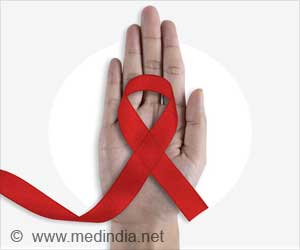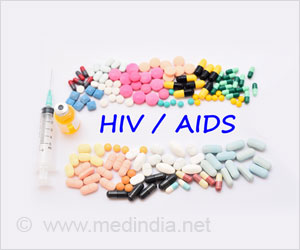Children, long neglected in the fight against AIDS, still lack access to effective HIV detection programs and treatments, participants warned Thursday, at a six-day world AIDS conference.
Experts at a six-day world AIDS conference have warned that children infected with HIV need better treatment facilities.
Experts at the 17th International AIDS Conference in Mexico City said most HIV-positive women have no effective means of preventing transmitting the virus to their unborn offspring, with 30 to 40 percent giving birth to an infected child.Without proper treatment, "half of the children born with HIV will die before they reach the age of two," said Dr Fernando Parreno, a pediatrician for Doctors Without Borders in Zimbabwe.
According to UN AIDS of the 33 million people around the world who have tested positive for HIV, some two million were children in 2007, up from 1.6 million in 2001.
Almost 90 percent of those cases were in Sub-Saharan Africa, experts said at the conference here, which runs until Friday and is attended by some 22,000 participants.
About 370,000 children under 15 were infected in 2007, slightly down from 450,000 in 2002, including 90 percent who had contracted the ailment from their mothers.
The World Health Organization recently called for early detection programs and urged that babies be treated as early as possible.
Advertisement
The Bristol-Meyers Squibb laboratory announced in March that it would, at the end of the year, end the commercialization of Efavirenz capsules which are particularly well adapted to pediatric use, because so little of the drug is being prescribed.
Advertisement
Due to a lack of suitable medicines, adult pills are split in two or three pieces to give to children, said former French foreign minister Philippe Douste-Blazy, head of UNITAID, an international drug purchase facility.
Many in Mexico said that UNITAID had helped to increase the number of children treated worldwide from 75,000 to almost 200,000 in two years.
It plans to treat 100,000 more children per year by 2010, Douste-Blazy said.
Activists from the Clinton Foundation offer devices to cut up pills to make them easier for children to swallow.
There is also a bitter syrup for children on the market and therapies involving three anti-retroviral drugs in one pill, which are suitable for some children.
Meanwhile, some NGOs, such as the US Joint Learning Initiative on Children and HIV/AIDS network, support direct aid to families, bypassing aid groups and consultants.
Co-chair of JLICA Jim Kim said that even if medicines are free, "the price of a bus ticket prevents the poorest people from taking their children to health centers."
But others, like David Goetghebuer, advisor to the children with AIDS program of Doctors Without Borders, defend the involvement of aid groups in such programs.
"They've reinvented family allowances," Goetghebuer said.
Children, like adults with HIV, also have stigma and discrimination to contend with.
In the Llavecitas magazine, made by HIV-positive children in Central America, 10-year-old Angelical recounted how she was afraid to tell people of her HIV-positive status.
"I don't want to say I'm suffering from 'that' because people will like me less," she wrote.
Source-AFP
RAS/M











